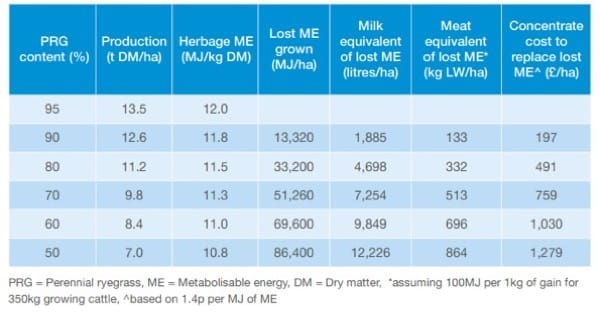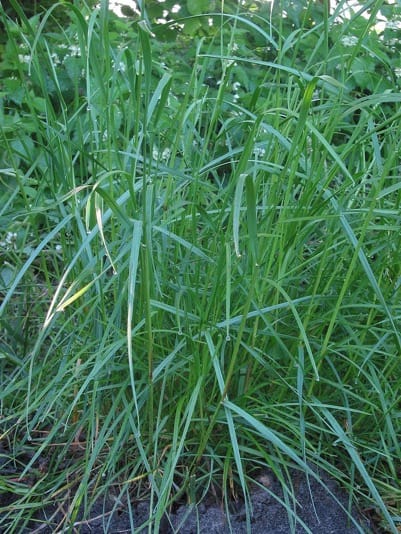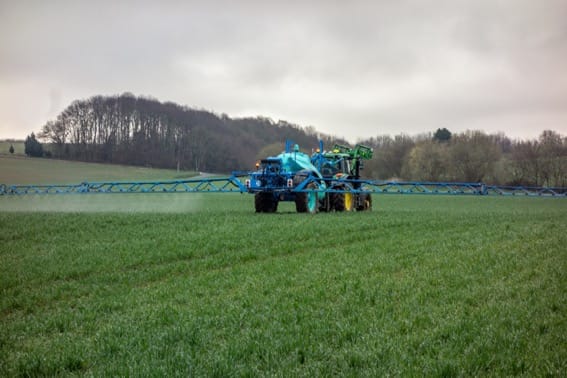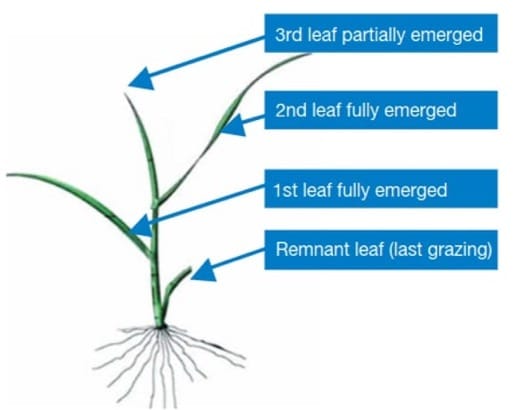If you are a dairy, beef or sheep farmer and want to earn more profits from your farm business, this guide will help you earn more profits and improve the health of your animals.
Are you wondering how ryegrass pastures can help you earn more profits? Let me show you.
But before we get into how ryegrass pastures can earn you more profits, let’s just quickly talk about how utilizing pastures can help you earn more profits.
You might have already seen my piece on how fully utilising pastures can help you earn more profits. If not, here’s a quick summary. By measuring and managing your pastures effectively, you can save significant money on feed costs, and increase production by up to 6%.
Both lower costs and higher production can collectively help you increase your operating profits by up to 19%. This tells us how important it is to manage your pastures effectively.
With that out of our way, let’s get into designing your pasture for increased yields, better nutrition and lower management costs. This is where ryegrass pastures come into the picture.
If you stick with me till the end of this guide, you will get definitive answers to the following questions:
- Why should you choose a ryegrass pasture?
- How to choose between ryegrass pasture varieties?
- How to grow a healthy ryegrass pasture?
- How to utilise ryegrass pastures optimally?
- How to choose the right ryegrass paddocks to graze?
- What else can you learn about ryegrass?
- How you can measure your pasture automatically, for $15 per hectare per year?
Sounds good? Let’s begin by understanding why you should choose a ryegrass pasture.
Highlight this like an advertisement somewhere after intro:
Why should you choose a ryegrass pasture?
Short answer, ryegrass pastures are more productive, nutritious and resilient.
Here’s a longer answer that explains all of this in more detail.
Ryegrass pastures are more productive
You can measure productivity in terms of palatability, dry matter yield and response to fertilizer. Ryegrass scores high on all these three parameters.
Ryegrass is classified as a high quality, palatable forage grass. All ruminants including cows, sheep and goats relish grazing on ryegrass.
It is excellent when animals consume it fresh, as hay and even as silage.
Ryegrass can also yield up to 12,000 Kg DM per hectare, under the right conditions without irrigation. This is more than double the yield of native grass pastures.
And finally, ryegrass responds well to fertilizers and irrigation. Small amounts of Nitrogen and periodic irrigation can help you highly productive pastures suitable for intensive grazing.
Ryegrass is classified to be a high-yielding, high-quality, nutritious forage grass.

Ryegrass pastures are more nutritious
It is highly nutritious because ryegrass has at least 11 mega joules of ME per Kg of DM, throughout the year.
In addition to this, ryegrass is also one of the few forage grasses that can give your animals anywhere between 18 to 20% of crude protein per Kg of DM.
So ryegrass alone can help you meet ME and protein requirements for your animals.
Compared to other options, this is also one of your cost-effective ME and protein feeds.
This is why ryegrass is considered to have superior nutritive value when compared to most other temperate climate pasture species.

Ryegrass pastures are more resilient
Ryegrass seedlings grow vigorously and establish well developed root systems quickly.
This makes it one of the few improved pasture varieties that exhibit good disease and pest resistance qualities.
For instance, ryegrass is susceptible to fungal rust as well as attacks pests such as from the lucerne flea and red legged earth mite. But, even these do not completely destroy entire swards of ryegrass.
Usually damages due to disease and pest attacks are limited during establishment stages of ryegrass,
So as you can see, ryegrass has a number of benefits. But, before you go out and reseed your pasture, did you know that there are different types of ryegrass varieties?
TO LEARN MORE ABOUT RYEGRASS PASTURES, READ:
- All about Perennial Ryegrass
- All about Annual Ryegrass
- Everything you need to know for managing a ryegrass pasture
- Managing Perennial Ryegrass for Spring Growth
- Choosing ryegrass cultivars based on forage value index (FVI) ratings
- How to Choose Ryegrass for Autumn Renovation
- What you need to know for establishing a perennial ryegrass pasture
- The secrets to productive ryegrass pastures
How to choose between ryegrass pasture varieties?
All ryegrass varieties are part of the Lollum genus that falls under the Poaceae family of monocotyledonous flowering plants, commonly known as grasses.
In plain English, this simply means that ryegrass is classified as a grass that grows in tufts.

More interestingly, there are at least 10 well known varieties of ryegrass, known to humanity. Today, several ryegrass varieties are grown widely across countries and continents.

However, among them only a few of them have significant economic importance. They are:
- Persian ryegrass, (Lolium persicum)
- Darnel ryegrass, (Lolium temulentum)
- (Annual) Italian ryegrass, (Festuca perennis earlier known as Lolium multiflorum)
- Perennial ryegrass, (Lolium perenne)
- Short rotation ryegrass (Lolium hybridum, Hausska.)
- Festuloliums (Festulolium braunii, K.A.)
For our purposes of seeding and managing a highly nutritious and productive pasture, we will only consider the Italian, Perennial, Short-rotation and Festulolium varieties.
Italian (Annual) Ryegrass
Italian ryegrass also sometimes known as the annual variety is native to southern Europe. It is not a true annual because in temperate climate conditions, it can even survive up to five years.
That said, it is typically planted in autumn, to be grazed during winter, and then dies over the following summer.
Annual ryegrass has two major advantages.
Firstly, it produces high yields and maintains productivity until mid-summer.
And secondly, it is easy to establish and grows rapidly.
However, these advantages also come with a few limitations.
For instance, some Italian ryegrass varieties may not produce seed heads in the first year. So you may have to spend more to seed and reseed your pasture initially.
Also, another tradeoff is that seeding reduces the quality of dry matter. To avoid this, you can consider planting later maturing varieties.
But these seeds are not commonly available and you might find it difficult to procure them in time.
More importantly, Italian ryegrass is not very resilient to heat and lack of moisture.
So in a sense it is a riskier bet when compared to planting perennial ryegrass. However, on the hand, if you are confident of irrigating and reseeding Italian ryegrass paddocks can give better yields than the perennial variety.

Perennial Ryegrass
Perennial ryegrass is also native to Europe. But also has origins in Asia and North Africa. Perennial ryegrass typically survives for many years.
It has several distinct advantages.
First, because of its nutritive value, perennial ryegrass is an excellent choice for pasturing cattle and sheep cows.
Secondly, it adapts well to mild-temperate climates and can survive dry summers.
And finally, it recovers rapidly after grazing or physical. This is why the famed Wimbledon lawn courts sow perennial ryegrass on all their courts.
However, these advantages also come with a few trade-offs.
To begin with, perennial ryegrass needs more care than other cool season grass species. And it has slightly lower herbage yields compared to annual ryegrass. Also yield may drop during summers and periods of prolonged hot waves.
As discussed earlier, perennial ryegrass is susceptible to crown rust and lucerne flea attacks. But overall, all said and done, this is an excellent improved pasture variety suited for temperate climates and one that I would recommend to begin with.
(Intermediate) Short Rotation Ryegrass
Another option to consider is the short rotation ryegrass (Lolium hybridum, Hausska.).
This is a cross between annual and perennial ryegrass. As such, it is intermediate in many of the above-mentioned traits.
It is less winter hardy but higher yielding than perennial ryegrass. But otherwise, its uses would be similar to perennial ryegrass.
Festuloliums
Festuloliums (Festulolium braunii, K.A.) is the only variety on this list that is not a true ryegrass species.
It is a cross between either Italian or perennial ryegrass and meadow fescue or tall fescue.
The name is a combination of Festuca, the genus of fescue and of Lolium, the genus of ryegrass.
In general, festuloliums have better persistence, disease resistance and winter hardiness than ryegrasses. At the same time, it also has a longer productive season and higher forage quality than fescues (more like ryegrass).
Depending on the cultivar, varieties may behave more like the ryegrasses or fescues.
Overall, this is a good option if you have long cold winters.
How to grow a healthy ryegrass pasture?
As discussed earlier, ryegrass grows best on fertile, well-drained soils in temperate climates. This includes most parts of North America, Europe, Central Asia, China, Australia and New Zealand where average mean temperatures mostly fall between 18 to 25 degree Celsius, through the year.
That said, ryegrass can also survive heat and droughts. However, its yields will significantly start decreasing in the absence of cool weather and moisture.
This is why you need to be able to irrigate your ryegrass pastures at least once a month.

If you're wondering, ryegrass responds well to Nitrogen.
To have a productive ryegrass pasture, either apply Nitrogen fertilizer or sow Nitrogen fixing legumes along with ryegrass seeds.
Depending on your type of soil and how intensively you graze your paddocks, you may need anywhere between 100 to 300 kg of Nitrogen per hectare, to maintain optimal yields.
How to utilise ryegrass pastures optimally?
Mature ryegrass pastures start losing chlorophyll and other nutrients. At the same time, when you graze ryegrass pastures that haven’t yet fully recovered it may result in slower regrowth.
To avoid this, you can use the ryegrass leaf stage approach, a simple and practical guideline to help you find the right time to graze your ryegrass paddocks.
The leaf stage is nothing but the number of new leaves that have sprouted, since your last grazing cycle.
As shown in the below picture, you can easily count the number of leaves just by looking at a few individual tillers of ryegrass on any given paddock.

For fully grown leaves assign a leaf stage value of one. And assign value of half for partly grown leaves.
We don’t count remnant leaves because it doesn’t count as new growth. It was already part of the tiller even while being grazed.
We assign values only to the new leaves that have emerged, because this indicates the tillers energy status and its ability to recover after grazing.
Let’s apply this leaf stage values to the above picture as an example.
There is one remnant leaf, so we don’t count that. In addition to this, there are two fully formed leaves and a partly formed leaf.
So the leaf stage of this particular example is two and a half.
For optimal results, you want to graze your ryegrass paddocks when it has a leaf stage value between two and three.
This will ensure optimal regrowth as well as a pasture with high quality nutrition.
In addition to the leaf stage approach and looking at individual tillers, you can also measure herbage levels after grazing a paddock and maintain residual pasture between four and six centimeters of height.
This will help you maintain recently grazed paddocks at a herbage level (or post grazing residual) of approximately 1,500 kg DM/ha and in turn help you promote faster regrowth.
However, this means that you need to take periodic pasture measurements.
In some cases, you may consider grazing even before the second new leaf emerges.
Especially, when you are running short of pasture or when you want to store the surplus of other paddocks as hay or silage.
However, avoid grazing after your ryegrass paddocks reach a-leaf stage value of three or above.
Because beyond this stage older leaves start dying out and you start losing out on feed quality as well as quantity.
Instead, it might be better for you to store this herbage as surplus hay or silage.
How to choose the right ryegrass paddocks to graze?
You’ve so far learnt the advantages of growing ryegrass pastures, choosing the best ryegrass variety for your needs, growing healthy ryegrass pastures and finally how to utilize your paddocks for optimal nutrition gains and regrowth.
Now it’s time to turn our attention towards choosing which paddocks need to be grazed in what order.
There are three possible approaches:
- Based on spontaneous ad-hoc decisions
- Based on grazing rotation cycles
- Based on herbage growth cycles
Let’s look at these approaches in detail.
Based on spontaneous ad-hoc decisions:
This simply means that there are no set patterns or rules to manage grazing schedules.
Instead, this approach relies completely on the farmer or manger’s intuition and rough herbage guessing skills.
While this approach may seem to be easy to manage, it actually requires a lot of effort, to check many paddocks on a frequent basis to arrive at a grazing decision.
Human errors can lead to costly mistakes and mismanagement of paddocks in the long run. This is why this approach is usually not recommended.
Based on grazing rotation cycles:
This is the simplest way to manage your grazing cycles.
After sequentially grazing all your paddocks in a particular order, once you’ve grazed all your paddocks, you then once again restart this grazing cycle from the beginning, in the same sequence.
While this is better than the ad-hoc approach, it still has some significant limitations.
As a farmer you know how irrigation, slope, drainage, soil type and wind can influence the growth of plants and pastures.
This is why some paddocks have a faster regrowth than others. So by following a time-based rotational grazing approach, you won’t be able to fully utilize your pasture, in some cases by up to 50%.
And more importantly you also won’t be able to utilize your pastures for optimal nutrient intake and regrowth.
Based on herbage growth cycles:
Grazing paddocks based on herbage growth measurements can help you fully utilize your pastures as well as optimize nutrient intake for your animals and pasture regrowth.
A research study shows that managing grazing schedules based on how much herbage each paddock has at any given time is a much better use of resources.
And that this alone can help you increase production by 5% and increase profits by up to 15%.
This is why any additional effort or investment that helps you measure and manage your pastures are well worth it.
Today, you have several options to help you do this.
On one hand, you can use measurement tools such as rising plate meters and C-Dax meters.
Or you can choose from advanced products and services such as electronic motes, drones or even satellite-based apps such as Pasture.io.
TO LEARN MORE ABOUT RYEGRASS PASTURES, READ:
- All about Perennial Ryegrass
- All about Annual Ryegrass
- Everything you need to know for managing a ryegrass pasture
- Managing Perennial Ryegrass for Spring Growth
- Choosing ryegrass cultivars based on forage value index (FVI) ratings
- How to Choose Ryegrass for Autumn Renovation
- What you need to know for establishing a perennial ryegrass pasture
- The secrets to productive ryegrass pastures
What else can you learn about ryegrass?
- Improving pasture for better returns
- Managing Annual Ryegrass Pastures
- Research papers on Annual Ryegrass
- CABI Datasheet on Perennial Ryegrass
- Ryegrass species resources by Dairy NZ
- Factsheet on Perennial Ryegrass by USDA
- Perennial Ryegrass Management Resources
- Improving nutritional quality of forage crops
- The different species and sub-species of Ryegrass
- The farm business case for feeding ruminants just on pasture
- How farmers could utilise more pasture to produce more profitable milk
- Benefits of accurately allocating feed daily to dairy cows grazing pasture
- Ryegrass types for pasture and hay by University of Wisconsin-Madison
How you can measure your pasture automatically, for $15 per hectare per year?
Conventional ways of measuring your pasture can be cumbersome and costly.
This is why I started pasture.io, to help progressive livestock farmers like you, manage your pastures more effectively and in turn earn more profits.
We help you measure your pasture, automatically.
Yes, that’s right.
You get automatic updates on your phone and computer, several times a week that show you which paddocks to graze next for best results.

To give you accurate pasture grazing suggestions we use artificial intelligence and high-resolution satellite imagery along with your local weather and your farm data.
The satellite imagery helps us assess your herbage in real-time.
The weather data helps us factor in seasonal weather changes to give and predict more realistic outcomes.
And finally the data from your farm helps us factor other important local variables such as when your cows last grazed a particular paddock or when a paddock was last fertilised.
This means we can help you measure pasture growth until 3,500 Kg DM/ha with reasonable confidence.
So we can help you utilize both your pastures as well as surpluses effectively. This is something that other pasture growth measurement tools or services cannot offer.
In addition to this, we have built several tools such as the leaf emergence calculator, nitrogen calculator and area allocation calculator to plan your spraying, fertilizing, and sowing activities.
As you can see, we are building something that sets you up for success, to make it easier for you to take the right decisions, amidst your busy work day.
But more importantly, it gives you a system that automatically helps you manage your pasture effectively.
In case you’re curious, our pricing is simple.
You play a flat fee of AUD 1,099 per year, and then pay AUD 8 per hectare per year.
So, if you own 150 hectares, you will pay about AUD 15 per hectare per year.
And in case you want something simpler; we also offer you a free plan that costs you nothing.
Please check out our free and paid plans. It might change your life and your pasture for the better.
Happy Farming!
Additional Reading Resources
-
Everything you need to know for managing a ryegrass pasture
-
Choosing ryegrass cultivars based on forage value index (FVI) ratings
-
Annual Ryegrass
-
All About Perennial Ryegrass
-
It’s Official—Australian-grown Rye Grass Is The Best!
-
Ryegrass Demystified: Your Ultimate Handbook to Different Pasture Seed Options
-
How to Make Your Perennial Ryegrass Pasture More Productive
-
Establishing Perennial Ryegrass Pastures
-
Managing Perennial Ryegrass for Spring Growth
-
How to Choose Ryegrass for Autumn Renovation


























